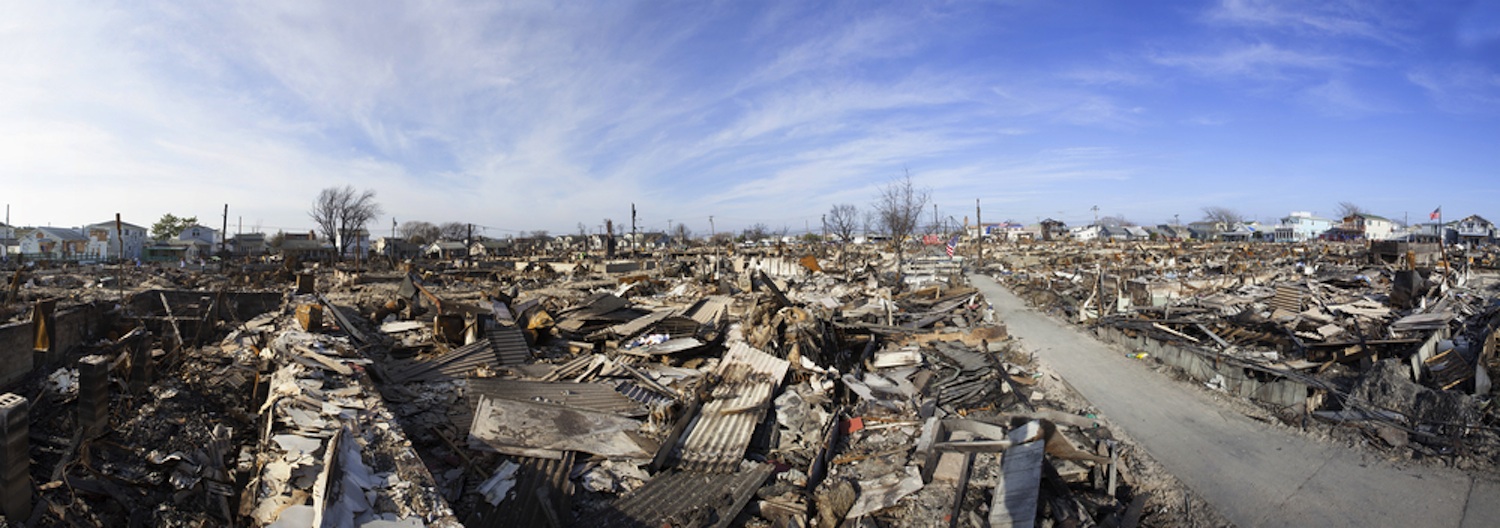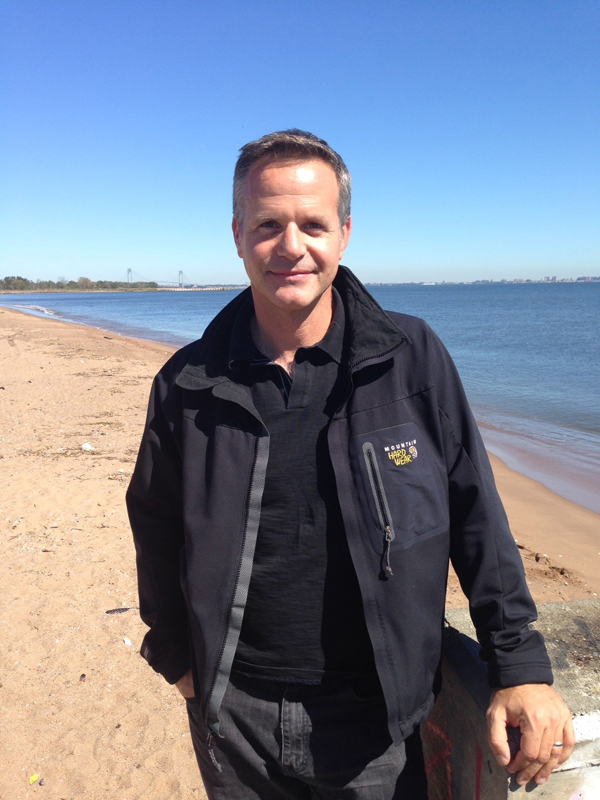
To Make New York City Safer, Nature Matters (Op-Ed)

Bill Ulfelder is executive director of The Nature Conservancy in New York. He contributed this article to LiveScience's Expert Voices: Op-Ed & Insights.
In a climate changing world, it is hard to know which is worse: the certainty or the uncertainty. The certainty is that the number of climate-related catastrophes nationally and worldwide is increasing, and their cost is growing dramatically.
In the United States, the number of climate-related disasters that inflicted greater than a $1 billion in damages has been growing steadily in recent decades, and already 12 occurred this year. And the individual costs of those events have been growing from hundreds of millions of dollars — even a few billion – to the nearly $70 billion wrought by Hurricane Sandy, which also took hundreds of lives.
At the same time, the uncertainty is almost unbearable. When will the next hurricane, storm or heat wave come? As federal subsidies are eliminated how much will flood-insurance costs increase for homeowners living in floodplains? When will post-disaster relief arrive in the form of buy-outs or support to re-build smarter? It is agonizing to watch home and business owners struggle with these questions.

Sandy reminded our nation of New Yorkers' ability to help one another in times of need, and our determination to make our city safer and more resilient. At the same time, people are worried, and they often don't know what to do. In terms of lives, homes, businesses and economic productivity, climate change risks to New York City are huge. With more than 520 miles of coastline, a dense coastal population, and billions in shoreline investments, the city has more at stake than any other in the nation. [On the Ground: Hurricane Sandy in Images ]
With the one-year anniversary of Sandy upon us, The Nature Conservancy is releasing a new analysis that helps understand the kind of innovative solutions New York and other cities need. At the request of the city, The Nature Conservancy, in collaboration with the engineering firm CH2MHill, conducted a pioneering study, "Integrating Natural Infrastructure into Urban Coastal Resilience," which is different from anything that has been done before.
The study looks at a representative, vulnerable community in New York City and evaluates the potential role of nature and natural defenses like dunes, mussel beds, wetlands, parks and restored beaches in helping protect it from the impacts of climate change — particularly sea level rise, storm surge and coastal flooding — and assesses how the city could combine natural defenses with more traditional engineered infrastructure alternatives, like sea walls and gates.
Sign up for the Live Science daily newsletter now
Get the world’s most fascinating discoveries delivered straight to your inbox.
The conceptual analysis used the community of Howard Beach, Queens, a low-lying, densely populated neighborhood of approximately 5,500 homes that suffered 10 feet of storm surge during Sandy. The researchers developed a hydrodynamic model that includes storm surge, wave and wind calculations, water depths, bathymetry and topography and the characteristics of a 1-in-100-year storm. Then the researchers modeled the extent of coastal flooding and upland flood depths, and calculated the physical damage and economic loss to the residential neighborhood. Finally, they examined how defenses, natural and "hard," could reduce the damage and loss.
The study suggests that mixed approaches combining natural defenses with hard defenses, such as permanent walls or removable ones — walls that are put up as a storm approaches and taken down afterwards — and small gates at the mouth of Howard Beach's two canals, would be very effective at reducing risk and uncertainty. Moreover, it says that the benefits of these approaches would be significantly greater than the investment.
Natural defenses are cost-effective, provide co-benefits like clean water, clean air, access to the shore and recreation opportunities, and can complement hard infrastructure to significantly reduce risk.
From a cost perspective, it means that a mix of natural and built defenses could result in very significant avoided losses. While The Nature Conservancy historically has cited a study by the Multihazard Mitigation Council that suggests every dollar of risk reduction investment provides $4 in reduced disaster-mitigation cost, the Howard Beach analysis suggests that the return on investment would be even greater — that in some scenarios, combining natural and built defenses, the reduction in losses could be as much as $6 for every dollar invested for a single 1-in-100-year storm event. One scenario suggested as much as $466 million in total avoided residential losses with an investment of $75 million in green infrastructure (natural protections, such as sand dunes and oyster reefs) and grey infrastructure (manmade protective measures, such as seawalls and levees).
What is important about this analysis is that it helps compare a variety of natural and built solutions to better protect coastal communities, including urban ones, from the impacts of climate change.
A powerful lesson learned from Sandy is that nature plays a critical role in protecting us. The Conservancy has been applying the lessons learned in places like South Cape May, N.J., where dunes and wetlands that we helped restore a few years ago played an important role in protecting the community from Sandy's storm surge and flooding.

Science tells us that natural defenses are a key part of the solution. This combined approach may not work for the southern tip of Manhattan, but the city nevertheless should thoughtfully look at ways to reduce risk and uncertainty around all five boroughs, across the state and nationally. This study shows there are no simple solutions, but flexible approaches that combine the benefits of nature with engineering can be effective.
Nature matters. Healthy urban forests, rivers, wetlands, barrier islands, dunes, and mussel and oyster reefs all help protect and sustain people and property. The uncertainty is that we don't know when another superstorm will hit, or how long it will take for aid to arrive and for policy changes to come in its wake.
But there is one certainty: With up to three feet of sea-level rise expected this century in New York City, and more weather-related disasters on the way, investing in nature is a smart way to go.
The views expressed are those of the author and do not necessarily reflect the views of the publisher. This version of the article was originally published on LiveScience.









